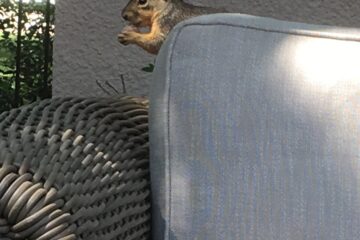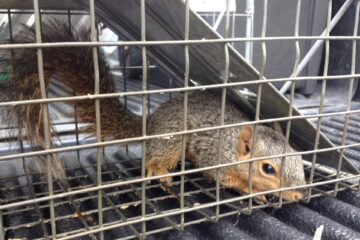Rodent infestations can leave behind unpleasant odors that persist even after the rodents have been removed. In addition, the cleanup process is essential to remove potentially harmful contaminants and prevent further infestations. Dealing with rodent odors and conducting thorough infestation cleanup is crucial for maintaining a healthy and odor-free living environment. In this article, we will discuss effective methods for handling rodent odors and provide guidance on proper infestation cleanup.
Dealing with Rodent Odors:
- Ventilation:
– Open windows and doors to increase airflow and allow fresh air to circulate. Proper ventilation helps dissipate odors and improves indoor air quality.
– Use fans or air purifiers to help remove odors and freshen the air. Consider using air purifiers with activated carbon filters, which are effective at trapping odorous molecules.
- Absorb Odors:
– Place bowls of vinegar or baking soda in the affected areas. These natural absorbents can help neutralize odors over time.
– Activated charcoal or odor-absorbing products specifically designed for removing odors can also be effective in reducing the smell of rodent infestations.
- Clean and Disinfect:
– Thoroughly clean affected areas, including floors, walls, and surfaces, using a mixture of warm water and a mild detergent.
– Wear gloves and a mask while cleaning to protect yourself from potential contaminants.
– After cleaning, disinfect surfaces using a solution of bleach and water (1 part bleach to 10 parts water) to kill any remaining bacteria or pathogens.
Infestation Cleanup:
- Remove Contaminated Materials:
– Dispose of any items that have been damaged or contaminated by rodents, such as food packages, insulation, or nesting materials.
– Use disposable gloves and seal contaminated materials in plastic bags before disposing of them properly.
- Vacuuming:
– Use a vacuum cleaner with a HEPA filter to remove rodent droppings, urine, and nesting materials.
– Pay close attention to corners, crevices, and hidden areas where rodents may have nested.
– After vacuuming, dispose of the vacuum bag or empty the canister and clean the vacuum thoroughly to prevent any lingering odors or contaminants.
- Sanitization:
– Mix a solution of bleach and water (1 part bleach to 10 parts water) and use it to sanitize surfaces, especially those that were in direct contact with rodents or their droppings.
– Wipe down walls, floors, countertops, and other hard surfaces with the bleach solution.
– Launder any washable fabrics or materials that may have come into contact with rodents.
- Seal Entry Points:
– After completing the cleanup process, identify and seal any entry points that rodents may have used to gain access to your property.
– Use appropriate materials, such as steel wool or wire mesh, to seal gaps, cracks, and openings.
– This step is essential to prevent future infestations and avoid a recurring rodent problem.
- Consult Professional Services:
– In severe infestation cases or if you are uncomfortable handling the cleanup process, consider contacting professional pest control or cleanup services.
– These professionals have the expertise, equipment, and knowledge to effectively clean up and sanitize the affected areas, ensuring thorough removal of contaminants and odors.
Dealing with rodent odors and conducting proper infestation cleanup is crucial for maintaining a healthy and odor-free living environment. By following the methods discussed above, including proper ventilation, odor absorption techniques, thorough cleaning and disinfection, removal of contaminated materials, sealing entry points, and consulting professional services when needed, you can effectively address rodent odors and ensure a clean and safe living space. Taking prompt action and implementing proper cleanup measures will help restore your home’s freshness and prevent future rodent infestations.




